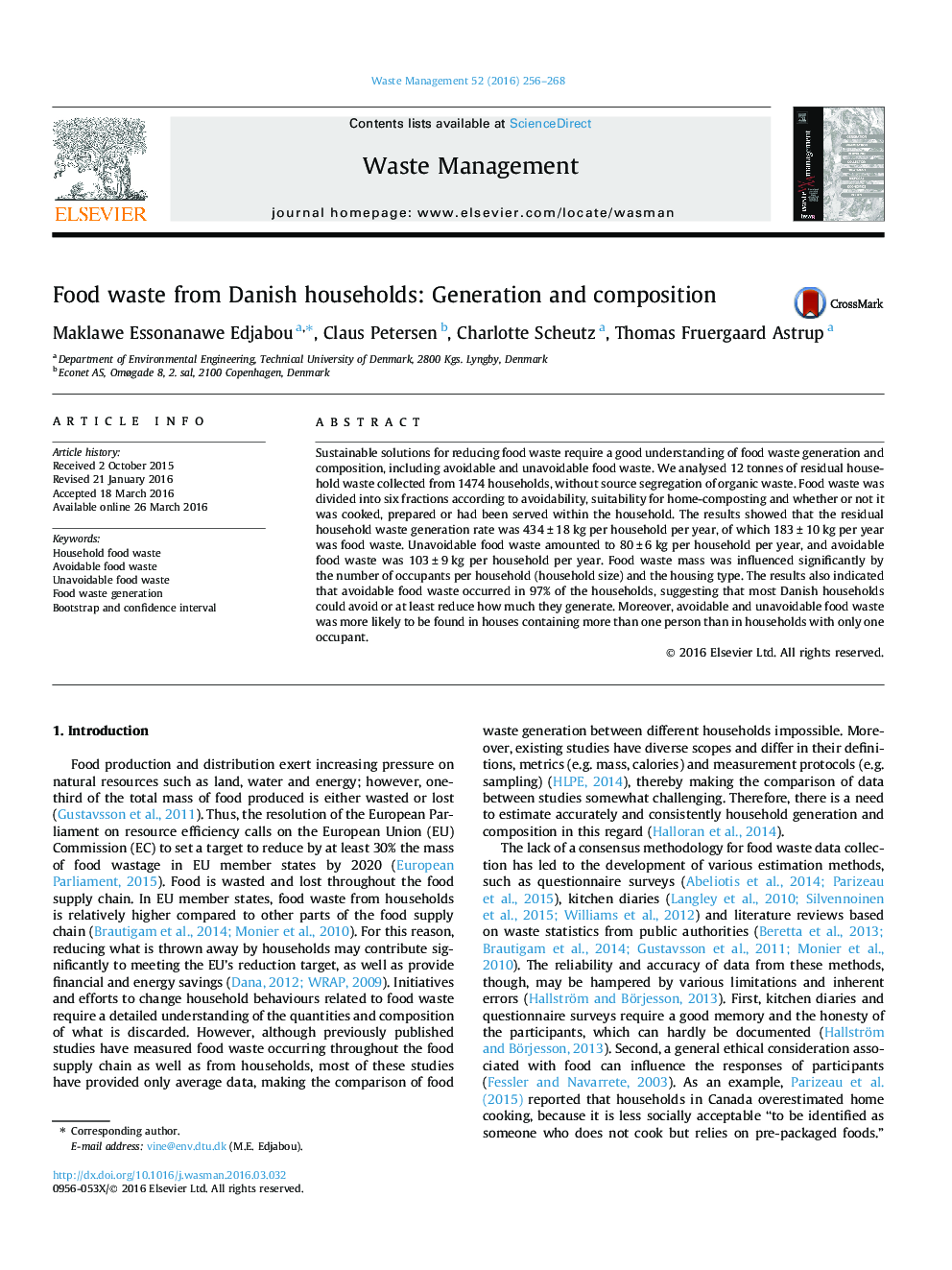| کد مقاله | کد نشریه | سال انتشار | مقاله انگلیسی | نسخه تمام متن |
|---|---|---|---|---|
| 4471247 | 1622634 | 2016 | 13 صفحه PDF | دانلود رایگان |
• We sampled and measured the mass of food waste in 1474 Danish households.
• A Danish household generated 80 ± 6 kg/year unavoidable and 103 ± 9 kg/year avoidable.
• Avoidable and unavoidable food waste occurred in most of the Danish households.
• The mass of avoidable food waste per household increased significantly with household size.
• The mass of food waste per person was not significantly different between household size.
Sustainable solutions for reducing food waste require a good understanding of food waste generation and composition, including avoidable and unavoidable food waste. We analysed 12 tonnes of residual household waste collected from 1474 households, without source segregation of organic waste. Food waste was divided into six fractions according to avoidability, suitability for home-composting and whether or not it was cooked, prepared or had been served within the household. The results showed that the residual household waste generation rate was 434 ± 18 kg per household per year, of which 183 ± 10 kg per year was food waste. Unavoidable food waste amounted to 80 ± 6 kg per household per year, and avoidable food waste was 103 ± 9 kg per household per year. Food waste mass was influenced significantly by the number of occupants per household (household size) and the housing type. The results also indicated that avoidable food waste occurred in 97% of the households, suggesting that most Danish households could avoid or at least reduce how much they generate. Moreover, avoidable and unavoidable food waste was more likely to be found in houses containing more than one person than in households with only one occupant.
Journal: Waste Management - Volume 52, June 2016, Pages 256–268
